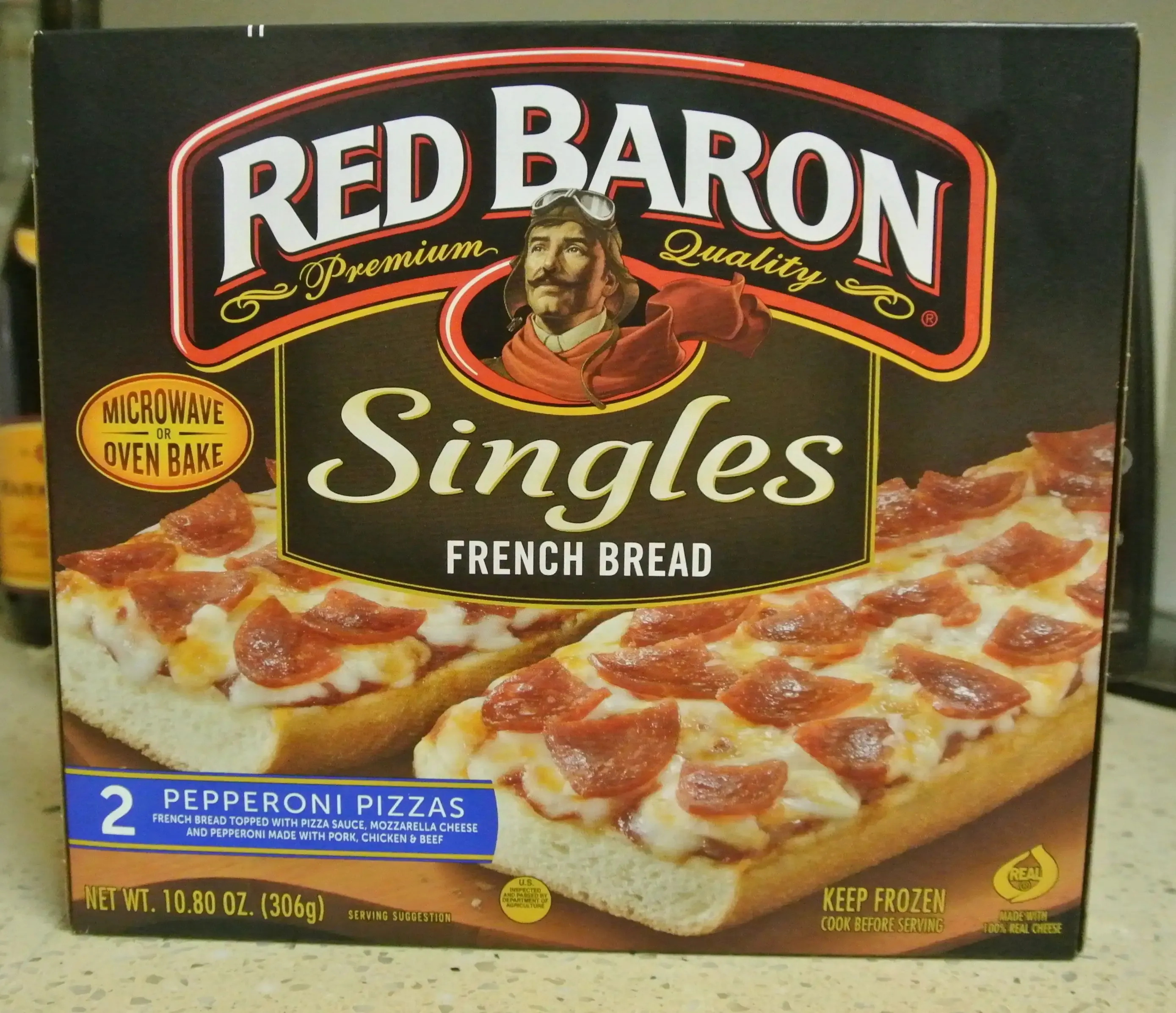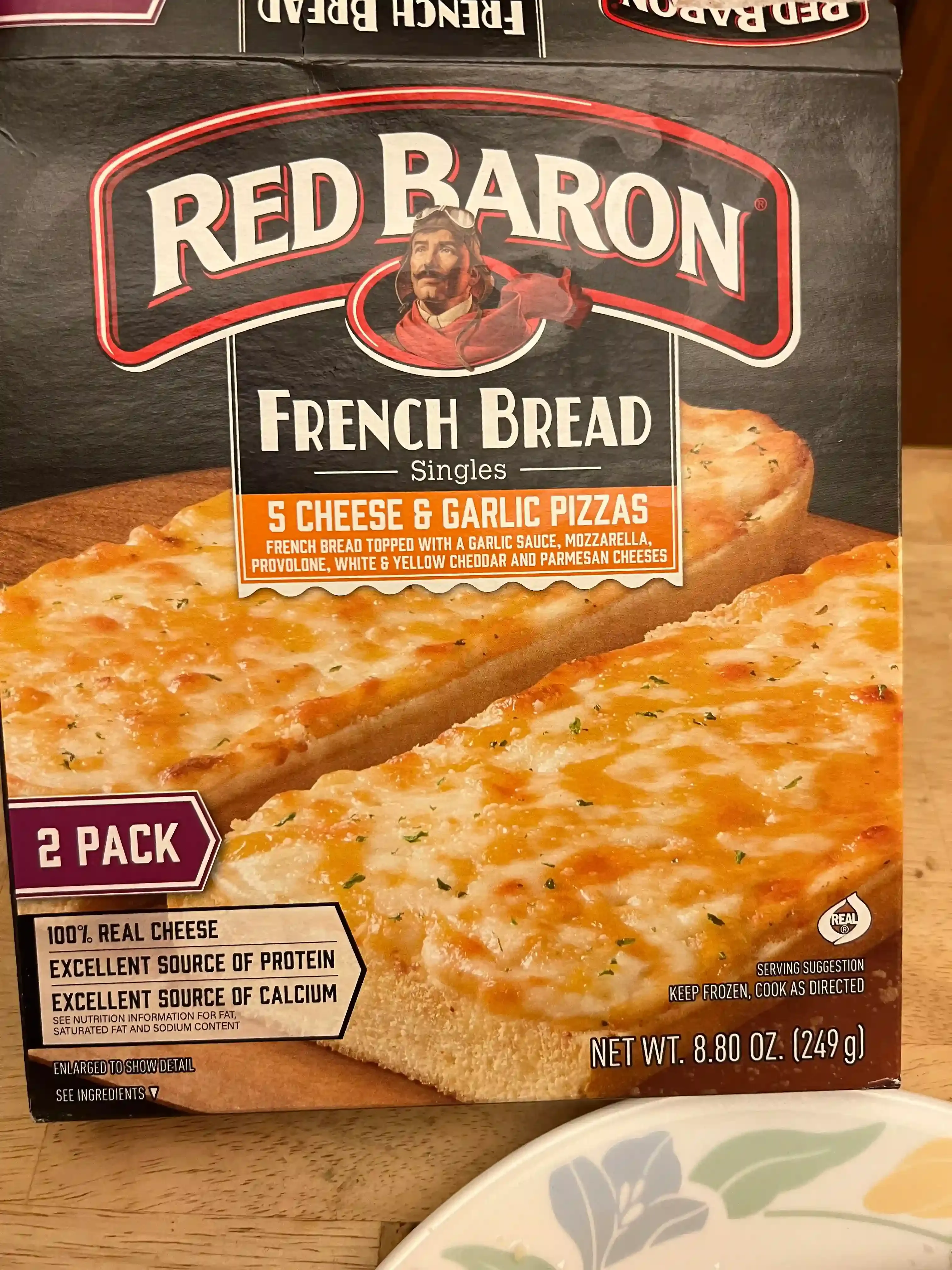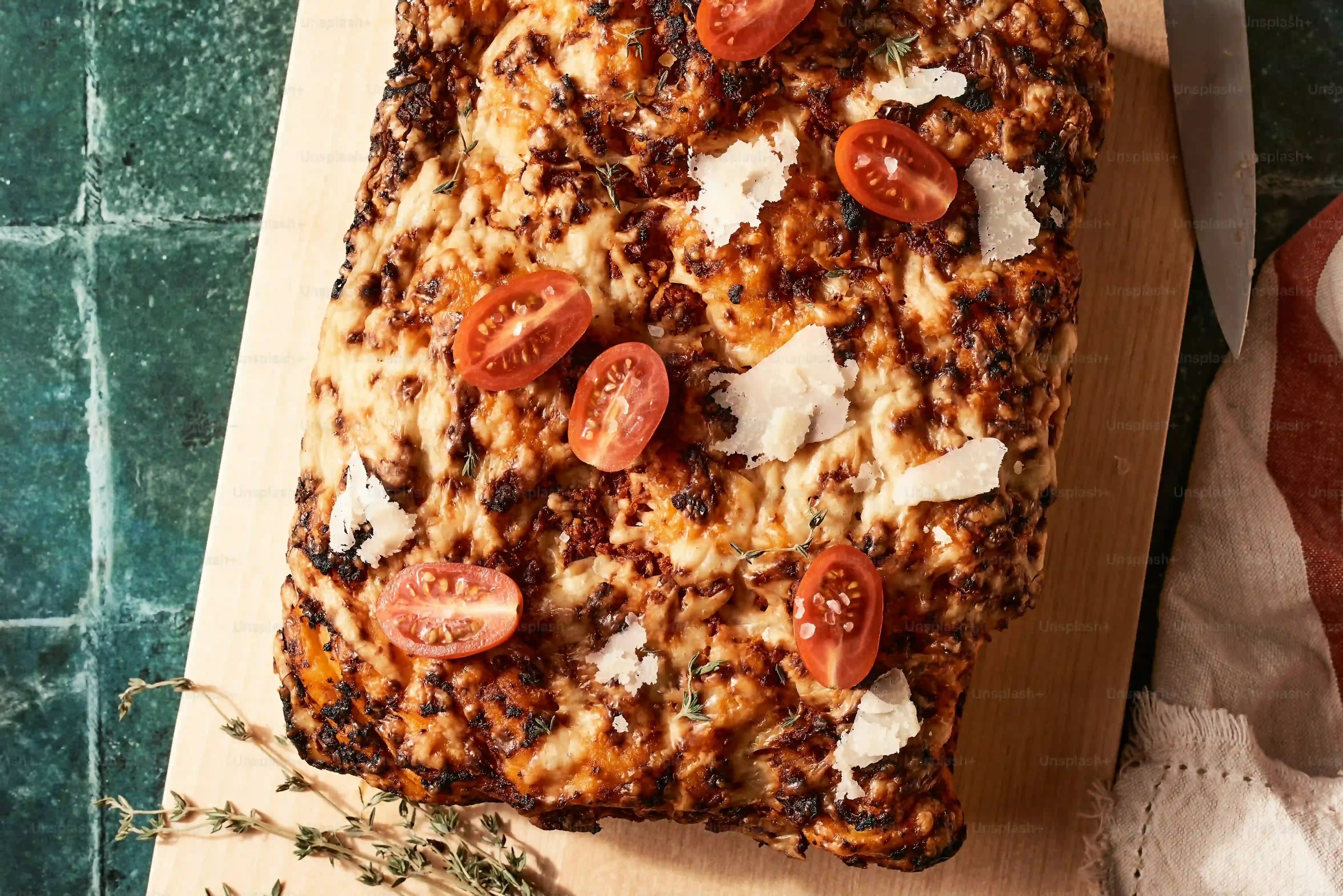Table of Contents
Let's be honest. You grabbed a Red Baron French Bread Pizza from the freezer, picturing that perfect, crispy crust and gooey cheese. Maybe you've had one turn out great before. Or maybe you've pulled out a sad, soggy mess or something charred around the edges that resembled charcoal more than dinner. It happens more often than we care to admit with seemingly simple frozen foods. It’s not rocket science, but there are definitely some common pitfalls that lead to pizza disappointment.
Common Red Baron French Bread Pizza Prep Pitfalls

Common Red Baron French Bread Pizza Prep Pitfalls
Skipping the Preheat and Using Cold Surfaces
Look, I get it. You're hungry. The box says "bake for X minutes," and you figure sticking it in a cold oven just means it takes a little longer, right? Wrong. Dead wrong. Putting a frozen pizza, especially one on French bread, into an oven that hasn't hit temperature guarantees an uneven cook. The outside starts to thaw and get soggy before the oven even warms up enough to start crisping. Then, when it finally gets hot, the top might burn while the middle is still cold and sad. It's like trying to run a marathon without stretching – you're just asking for trouble. Always, always preheat the oven fully to the temperature specified on the box. And don't even think about putting it directly on a cold baking sheet; that bottom crust needs direct heat from the oven rack or a hot stone/steel.
Thawing the Pizza or Piling on Extra Stuff
Another classic move: leaving the pizza out on the counter to "speed things up" before baking. This is a prime suspect in the case of the Soggy Middle. When the bread thaws, it absorbs moisture, and no amount of baking will truly fix that mushy foundation. Keep it frozen until the oven is ready. Also, resist the urge to pile on extra cheese or toppings unless you're prepared to adjust the cooking time and potentially deal with overflowing grease. Those little French bread bases aren't built to handle the Leaning Tower of Pepperoni. Adding too much extra weight and moisture just exacerbates the uneven cooking problem.
- Don't thaw the pizza before baking.
- Always preheat your oven completely.
- Place the pizza directly on the oven rack for best crisping (or use a preheated stone/steel).
- Avoid adding excessive extra toppings.
- Ensure the pizza fits comfortably without touching oven walls.
Ignoring Placement and Overcrowding
Where you put the pizza in the oven matters. The middle rack is usually the sweet spot for even heat distribution. Putting it too high can lead to a burnt top and undercooked bottom, while too low might char the bottom before the cheese melts. And please, for the love of crispy crust, don't try to cram two pizzas onto one small rack or worse, right next to each other if they're touching. Air needs to circulate around the pizza for that glorious, even bake. Overcrowding traps steam and heat unevenly, inviting that dreaded sogginess back into the picture. Give your pizza some breathing room; it'll thank you with a better texture.
Getting the Oven Temperature Right for Your French Bread Pizza

Getting the Oven Temperature Right for Your French Bread Pizza
Why the Box Temperature Isn't Always Enough
you looked at the box. It says, "Bake at 400 degrees F for 12-15 minutes." Easy, right? You crank your oven knob to 400 and walk away. Here's the kicker: that knob is often lying to you. Oven thermostats can be wildly inaccurate. Yours might heat up to 375 F when set to 400, or it could blast past it to 450 F. This isn't just a minor inconvenience; it's a direct assault on your pizza's potential. Too cool and you get that dreadful pale, chewy crust and toppings that barely warm through. Too hot and you risk scorching the bottom while the top is still struggling to brown evenly. Relying solely on the dial is one of the most commonred baron french bread pizza cooking mistakes to avoid.
Understanding Your Oven's Quirks
Every oven has its personality, and sometimes that personality is a bit... unreliable. Maybe the heating element on the bottom is stronger than the top, or perhaps the back runs hotter than the front. These inconsistencies become glaringly obvious when you're trying to achieve uniform crispness on a French bread base. If you consistently get one end burnt or the middle undercooked despite following the time, your oven is probably the culprit. It's not personal, it's just physics and maybe shoddy manufacturing. Acknowledging that your oven might be a moody teenager is the first step to getting a better pizza out of it.
Ever wonder why one batch is perfect and the next is a disaster, even with the same settings?
Get an Oven Thermometer, Seriously
This is probably the simplest, cheapest fix for temperature-related pizza woes. Buy a small, inexpensive oven thermometer and hang it inside your oven. Preheat your oven to the box temperature and then check what the thermometer *actually* says. You might be surprised. If it reads low, adjust your oven setting up. If it reads high, dial it down. This takes the guesswork out of it and puts you in control. It's like finally getting prescription glasses after squinting for years – suddenly, everything comes into focus, including that perfectly golden-brown crust. It's a small step, but it makes a massive difference in avoidingred baron french bread pizza cooking mistakes to avoid.
Don't Undercook or Burn: Timing Red Baron French Bread Pizza

Don't Undercook or Burn: Timing Red Baron French Bread Pizza
Why Following the Box Time Exactly Can Fail You
so you've got your oven preheated properly (hopefully with a thermometer!) and the pizza is placed correctly. The box gives you a time range, usually something like 12 to 15 minutes. You set a timer for 15 minutes and walk away, expecting perfection. This is where another commonred baron french bread pizza cooking mistakes to avoidsneaks in. That time range on the box is a *suggestion*, a guideline based on a perfectly calibrated oven and ideal conditions. It doesn't account for your oven's hot spots, how frozen the pizza *really* is, or how humid your kitchen might be. Relying solely on the timer without checking on the pizza is a recipe for either a pale, sad, undercooked mess or a charred disaster.
Learning the Visual Cues for Doneness
Forget the clock for a second and start looking at the pizza itself. This is your best indicator. You're looking for a few key things: the cheese should be fully melted and bubbling, maybe with a few golden-brown spots appearing. The edges of the French bread should be turning a nice golden-brown and looking crisp, not soft and pale. The toppings, like pepperoni, should look cooked – slightly curled and maybe a little crispy on the edges if that's your jam. If the cheese is still solid-white and the bread looks like it just came out of the bag, it's not ready, no matter what the timer says. If the edges are black and smoking, well, you waited too long, didn't you?
What does perfectly cooked look like to *you*? Are you a light golden-brown person or do you prefer a deep, almost-dark crisp?
Adjusting Time Based on Your Oven and Preferences
Once you start watching the pizza, you can begin to understand how your specific oven handles things. Maybe it consistently takes 17 minutes in your oven to get that perfect crisp, even though the box says 15. That's fine! Your oven has its own rhythm. Start checking on the pizza a couple of minutes before the minimum recommended time on the box. See how it looks, and add a minute or two at a time until it hits *your* definition of done. It's better to add a few minutes than to pull out an undercooked pizza or, worse, open the oven to a smoke alarm serenade. This active monitoring is key to avoiding those frustratingred baron french bread pizza cooking mistakes to avoid.
Cooling and Serving: Avoiding Final Red Baron Pizza Mistakes

Cooling and Serving: Avoiding Final Red Baron Pizza Mistakes
Cutting Too Soon: The Molten Cheese and Soggy Center Trap
You just pulled that glorious, bubbling pizza out of the oven. It looks perfect! The smell is driving you wild. Your instinct is to grab the cutter and dive right in. Resist this urge. Seriously, put the cutter down. When pizza comes out of the oven, everything is still incredibly hot and, frankly, a little unstable. The cheese is molten lava, ready to slide off and burn your chin. More importantly, the steam trapped under the toppings and in the bread needs a minute to dissipate. Cutting it immediately traps that steam, turning your potentially crispy French bread base into a soggy sponge right before your eyes. This is a classic, frustrating error in the list ofred baron french bread pizza cooking mistakes to avoid.
Letting It Sit Too Long (or Not Long Enough)
so you waited a couple of minutes. Good job! But don't let it sit there indefinitely either. A few minutes (think 2-3) is usually enough time for the cheese to set slightly and the steam to escape, allowing the crust to maintain its crispness. If you let it sit for ten minutes while you get distracted by your phone, you risk the cheese hardening into a solid mass and the crust starting to cool and lose that fresh-from-the-oven magic. Serve it relatively soon after that short rest period. And when you do serve, remember these are individual portions; trying to slice them like a round pizza can be awkward and messier than necessary. Treat them like personal submarines of cheesy goodness.
- Let the pizza rest 2-3 minutes before cutting.
- Use a sharp knife or kitchen shears for cleaner cuts if needed.
- Serve relatively quickly after resting for best texture.
- Don't stack pizzas immediately after baking – steam city!
- Enjoy it while it's hot, but not molten-lava hot.
Wrapping It Up: Better Pizza Awaits
So there you have it. Avoiding those commonred baron french bread pizza cooking mistakes to avoidisn't about becoming a gourmet chef; it's about paying attention to a few simple details the box might gloss over. Stop putting it on a cold baking sheet, double-check your oven temp, set a timer that actually works, and give it a minute to cool before you bite into molten cheese. It won't magically turn into a wood-fired masterpiece, but it will be significantly better than a soggy, lukewarm, or burnt tragedy. Enjoy your slightly-less-terrible frozen pizza experience.
